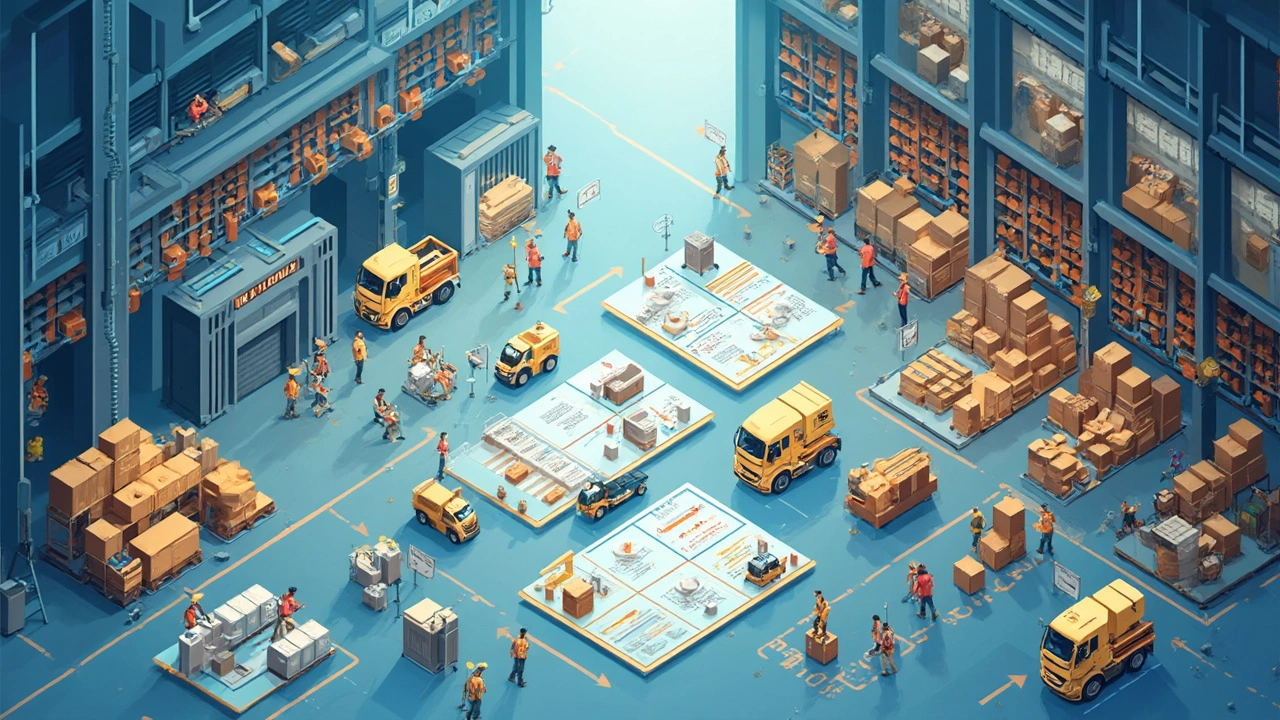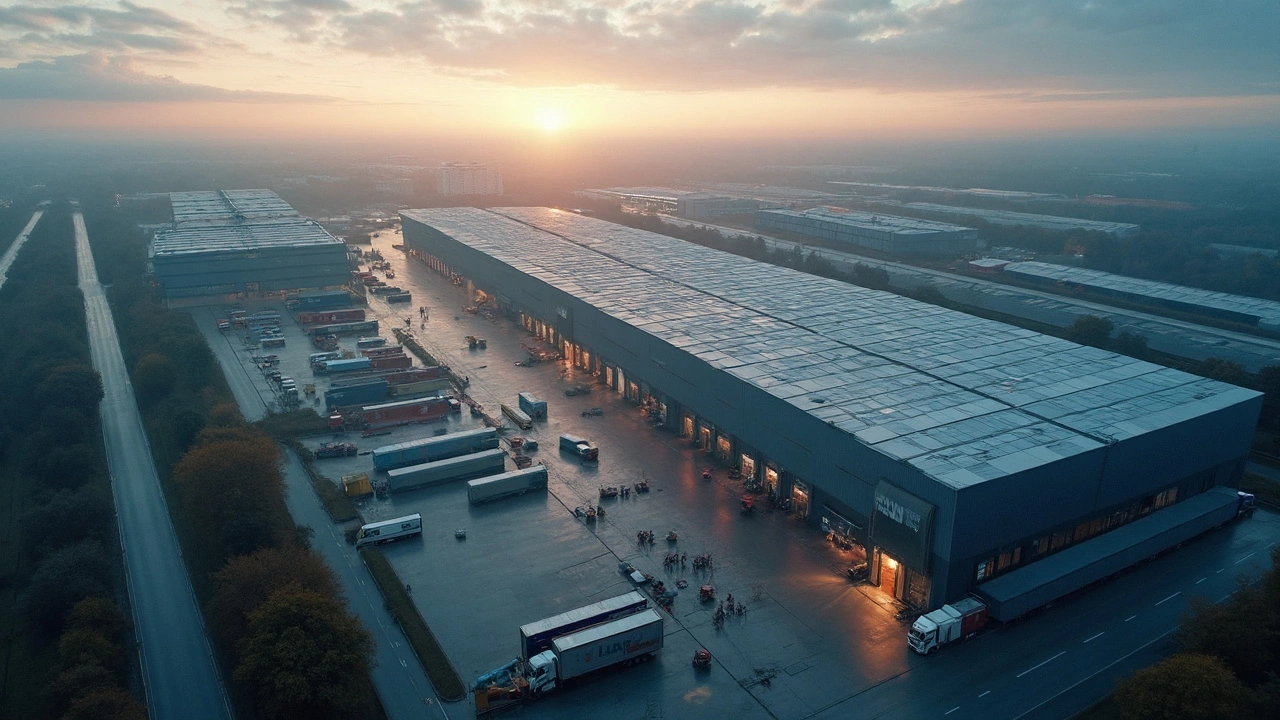Size matters in warehousing, and one name always pops up when people ask who’s at the top: Prologis. If you shop online, grab groceries, or work in retail, odds are your stuff has touched a Prologis warehouse at some point. With over a billion square feet of space and properties on four continents, they’re not just big—they’re everywhere.
But why does their size even matter? When a company owns and operates more space, they offer flexibility, can take on huge shipments, and shift goods faster. That’s a big deal if you’re a business facing tight deadlines or wild swings in online sales. For smaller brands, even just renting part of a Prologis site means tapping into the scale and reliability built for the world’s biggest players.
- Sizing Up the Biggest: Who’s on Top?
- What Massive Operations Look Like
- How Size Impacts Service and Speed
- Tips for Picking the Right Warehouse Partner
Sizing Up the Biggest: Who’s on Top?
When it comes to the biggest warehouse company, Prologis towers above the rest. As of early 2025, they control more than 1.2 billion square feet of warehouses in over 20 countries. They’ve got properties scattered from the U.S. and Europe to Asia and Latin America. That’s more than 5,000 buildings just for logistics, e-commerce, and major businesses looking for dependable storage.
So, how did Prologis get so big? They didn’t just build all these spaces from scratch. Over the years, they bought other major companies, like DCT Industrial Trust in 2018 and Duke Realty in 2022. These deals helped Prologis widen their reach and keep smaller competitors in the rearview mirror.
There are other big names too—GLP, Goodman, and SEGRO, for example—but none match Prologis for scale and coverage. GLP, based in Singapore, manages a ton of logistics space in Asia and the Americas, but still falls several hundred million square feet behind. Goodman and SEGRO are strong in Europe, focusing on regional clients and e-commerce growth, but their numbers simply don’t stack up globally.
This kind of scale means Prologis has more locations near key ports, airports, and huge cities than anyone else. That’s a game changer for businesses needing fast and flexible deliveries. If your goal is global reach and reliable support, choosing the biggest player makes sense. Their size gives stability during supply chain chaos and opens more options for expansion as your business grows.
What Massive Operations Look Like
When you picture the biggest warehouse company in the world, think bigger than just one mega-building. Prologis owns over 5,500 facilities across 19 countries. If you stacked all their buildings end to end, you’d cover more than a billion square feet—enough to fit hundreds of shopping malls.
Their properties aren’t just big; they’re smart. Many warehouses run on advanced automation, using robots and self-driving forklifts for fast picking and packing. Some even have solar panels on the roofs, generating millions of kilowatt-hours each year. That’s good for the planet, but it also keeps costs down for tenants.
Here’s what makes these operations so massive:
- Distribution centers near huge ports and highways for quick shipping.
- Warehouses custom-built for giants like Amazon, Walmart, and FedEx.
- Climate control for goods like food, medicine, and tech gear—no melting, no freezing, no excuses.
- Leasing models that work for both startups and global corporations.
Check out some 2024 stats that show just how wide their reach is:
| Feature | Details |
|---|---|
| Total Space Managed | ~1.2 billion sq ft |
| Countries Active | 19 |
| Total Facilities | 5,500+ |
| Major Tenants | Amazon, DHL, Home Depot, FedEx |
| Annual Solar Power (kWh) | 440 million+ |
With all this muscle, Prologis can handle emergencies—rapid surges in orders, supply chain hiccups, or new tech rollouts—way better than your average local warehouse. Their teams are up all night, syncing shipments for thousands of companies, sometimes moving a retailer’s whole inventory across the country in a single weekend. That’s what massive really looks like in warehousing.

How Size Impacts Service and Speed
Bigger warehouses don’t just mean more storage—they can actually speed up how fast things get to you. Let’s look at what sheer size does for companies like Prologis and the whole industry.
When you’re handling products for huge brands like Amazon, FedEx, and even Walgreens, you need a lot of space. Prologis isn’t just big for show—their massive network lets them place warehouses next to highways, rail hubs, and ports. That’s why packages don’t sit around for days waiting to get picked up. Instead, trucks can grab shipments and go, turning around orders faster than competitors who have to ship from farther away.
The biggest warehouse company in the world reports average occupancy rates around 97%—meaning almost every bit of their space is in use and making money. Their speed doesn’t just come from size, though; it’s also about smart tech. Many Prologis sites have automated sorting systems and even robots that zip down aisles, picking items faster than people alone could manage.
Here's a quick look at how scale bumps up service and speed:
- Wider Reach: More locations mean companies can stock products closer to customers.
- Round-the-Clock Operations: Huge sites often run 24/7 shifts to keep pace with orders day and night.
- Bulk Handling: High-capacity facilities take on major shipments from big suppliers, avoiding bottlenecks.
- Tech Investment: Bigger budgets allow for more automation, making picking, packing, and shipping lightning quick.
Here’s some real-world data that shows just how much size matters in this game:
| Company | Space Managed (Million Sq. Ft.) | Average Delivery Time (Days) | Full-Time Employees |
|---|---|---|---|
| Prologis | 1,200 | 1-2 | 2,000+ |
| GLP | 700 | 2-3 | 1,600 |
| Duke Realty | 160 | 3-4 | 400 |
In a nutshell, if a company needs their products delivered fast—think next-day or even same-day—partnering with a warehouse that has huge reach and space gives them the muscle and speed to pull it off. That’s why the biggest industry heavyweights keep racking up global clients: their size directly fuels better service and faster delivery.
Tips for Picking the Right Warehouse Partner
It's easy to get dazzled by the sheer scale of global logistics giants, but bigger isn't always better for every business. The first thing you should look at is whether the warehouse company’s network lines up with your target markets. For example, if all your customers are in the US, a company like Prologis with a major footprint in North America gives you a leg up on speed and shipping costs.
Next, check out what kind of tech the warehouse uses. The best partners invest in real-time inventory tracking, smart automation, and flexible cloud systems—tech that takes the guesswork out of restocking and order accuracy. As of now, Prologis and a few other market leaders use platforms that can show you exactly where your goods sit, down to the pallet, so you're never in the dark.
Cost always matters, but watch out for hidden fees. Some warehouse companies will tuck in additional charges for long-term storage, peak-season surges, or even overtime work. Ask for a price sheet upfront. If they can’t give you one, move along—transparency is a must.
- Take a warehouse tour if you can. Seeing how clean, organized, and secure they keep their facility tells you a lot about how they’ll treat your products.
- Dig into references and reviews. Ask about real issues past clients faced and how the company handled them.
- Check their insurance and compliance track record, especially if you ship foods, drugs, or sensitive items.
- If you need custom solutions, like cold storage or assembly services, make sure they offer what you need before signing anything.
If you want the stability that comes with the biggest warehouse company, but also some flexibility, look at partners who offer both massive scale and tailored options for smaller businesses. You don’t have to go all-in with a global giant—sometimes, teaming up with a regional provider who “gets” your market is the best call.


